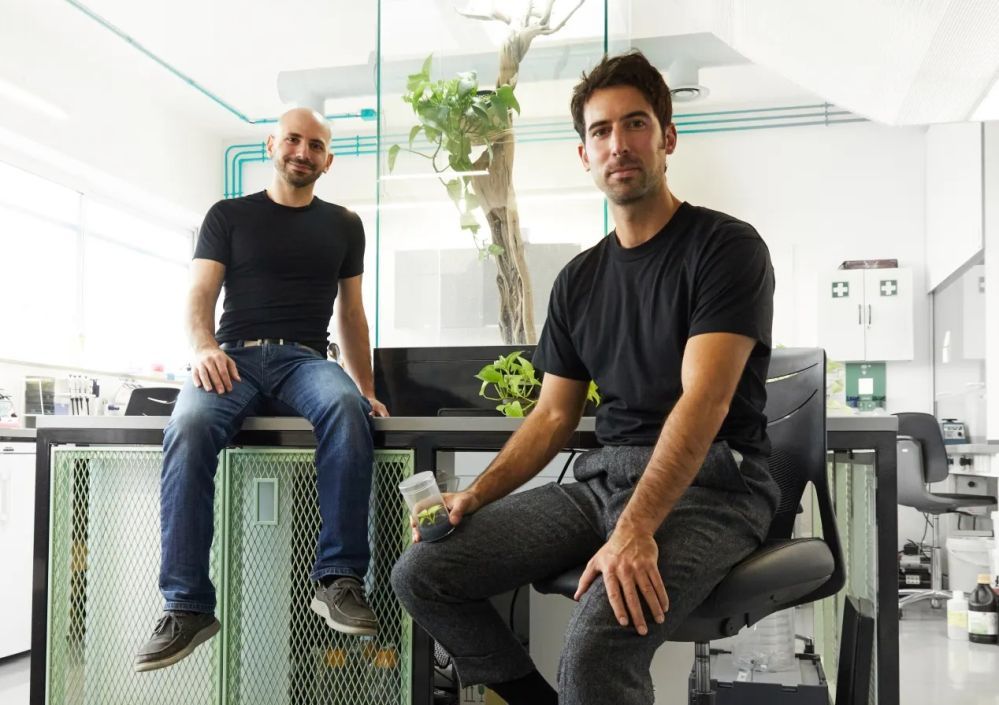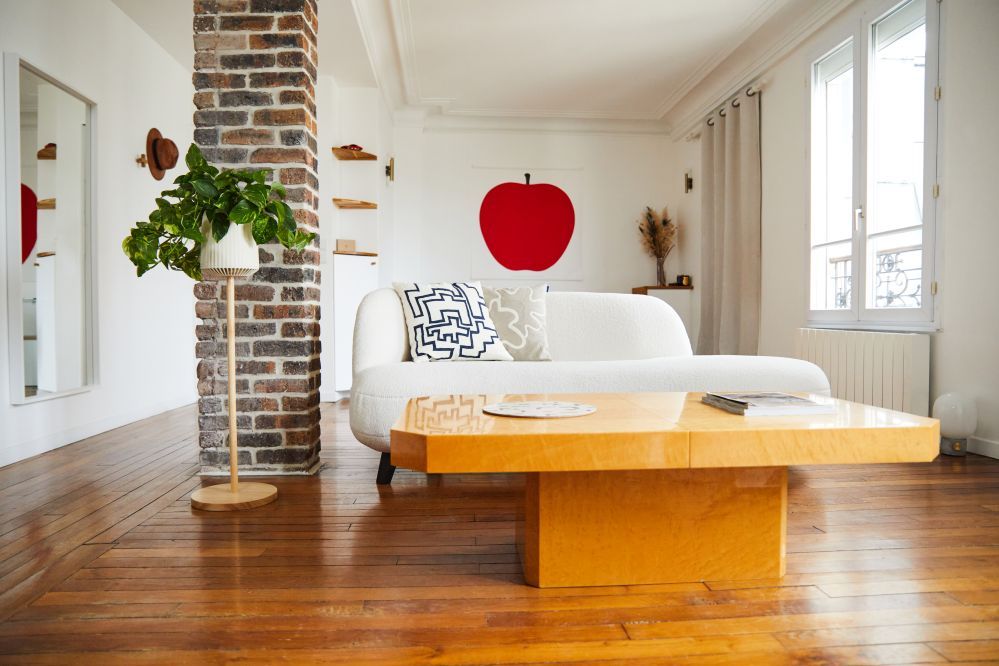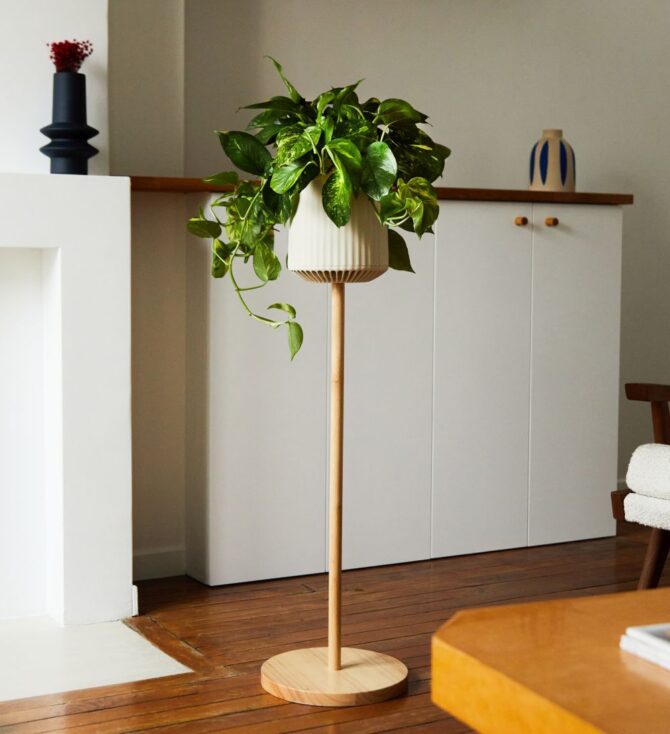Do houseplants purify the air? The answer, according to a 2019 article in The Atlantic, is summed up in the headline: ‘What indoor plants clean the air best? None of them.’
Read the full text of the article, however, and the picture is rather more nuanced. Plants can suck up harmful indoor pollutants in the air, acknowledges the author, it’s just that you need a huge number of them to make a difference.
A NASA study from 1989 showed that plants can remove indoor air pollutants called volatile organic compounds (VOCs) in a hermetically sealed chamber (such as a spaceship), explains The Atlantic. “But for plants to actually improve the air, even in a compact apartment, you’d need a concentration of houseplants that only the most dedicated plant lovers can actually achieve.”
Which is where French biotech startup Neoplants comes in.
Founded by Dr. Patrick Torbey and Lionel Mora in 2018, Neoplants has bioengineered a houseplant called Pothos to become so efficient at removing harmful volatile organic compounds that a single plant can remove the VOCs generated in a 16 x 9 foot room. This, it claims, makes its plants up to 30x more effective as air purifiers than any of the plants included in NASA’s study.
To cynics wondering if this is a rather high-tech solution to a problem that could be addressed by simply opening your windows, Torbey tells AgFunderNews: “When you open the window, you can get to the baseline outdoors level [of VOCs], but as soon as you close them, all the studies shows that after 10 to 20 minutes, the level of emissions goes right back up, and this chronic exposure is the problem.”
If you can keep your windows open 24:7, that’s great, he adds, but in most geographies, that’s not practical, especially in the winter months.

Neoplants engineers plants to metabolize VOCs and turn them into sugars and amino acids
While houseplants typically absorb VOCs very slowly, Neoplants engineers its plants to rapidly metabolize them and use VOCs as carbon sources, turning formaldehyde into sugars and a group of VOCs called BTEX (benzene, toluene, ethylbenzene and xylene) into amino acids.
The Pothos (Epipremnum aureum) plant was selected in part because it has a high growth rate and naturally possesses genes coding for enzymes that metabolize some VOCs, although they are expressed at a low level, he explains. It is also a low maintenance perennial plant that does not produce pollen or seeds, ensuring it will not spread in the wild, says Torbey.
“It’s not going to spread, but you can take cuttings [and grow new plants] as we want to incentivize people to share their plants with friends and family to introduce people to the concept of air purifying plants.”
To support the plant, Neoplants also supplies naturally occurring microbes in powder form that can be mixed with water and added to the soil every six weeks or so. While the bacteria have an innate ability to use VOCs as carbon sources, Neoplants has turbo-charged this capability though directed evolution.
What are volatile organic compounds?

According to the US Environmental Protection Agency (EPA), “concentrations of many VOCs are consistently higher indoors than outdoors.”
It adds: “Organic chemicals are widely used as ingredients in household products. Paints, varnishes and wax all contain organic solvents, as do many cleaning, disinfecting, cosmetic, degreasing and hobby products. Fuels are made up of organic chemicals. All of these products can release organic compounds while you are using them, and, to some degree, when they are stored.”
EPA’s ‘Total Exposure Assessment Methodology (TEAM) Study’ found “levels of about a dozen common organic pollutants to be 2 to 5 times higher inside homes than outside, regardless of whether the homes were located in rural or highly industrial areas.”
As for health effects, says the EPA, “Key signs or symptoms associated with exposure to VOCs include: conjunctival irritation, nose and throat discomfort, headache, allergic skin reaction, dyspnea, declines in serum cholinesterase levels, nausea, emesis, epistaxis, fatigue, dizziness. Some organics can cause cancer in animals, some are suspected or known to cause cancer in humans.”
$20m seed funding; US launch in 2024
Neoplants—which has raised $20 million in seed funding from backers including True Ventures, Heartcore, Entrepreneur First, and Collab Fund to commercialize its technology—focuses on two categories of VOCs. These are formaldehyde, and BTEX (benzene, toluene, ethylbenzene and xylene), which are released by a variety of indoor sources from paint, varnishes, adhesives, sealants, upholstery, and flooring to cooking and smoking.
Torbey says: “There’s nothing really that you can do to solve this today as current air purifiers don’t really address VOCs, which usually do not exceed 1 nanometer in diameter, a thousand times smaller than PM1 HEPA filters operating at the micrometer scale.”
While attempts have been made to remediate VOCs via catalytic oxidation, plasma, ozone generation, or adsorbent media, each approach has drawbacks, with some even forming harmful byproducts such as carbon monoxide, ozone and formaldehyde, claims Torbey,
But is Neoplants solving a problem that most consumers don’t even know they have?
According to Torbey, the growing market for indoor air purifiers—which filter out particulates but not gaseous contaminants—demonstrates that consumers are increasingly aware of air quality inside as well as outside the home, while the 39,000-strong wait list for Neoplants’ products suggests the demand for Neoplants’ solution is there.
“When we made 20 plants available [for beta testing] we asked people to fill in a questionnaire and more than 2,500 people answered it, and from this we were able to extrapolate that you can divide people interested in this into a few categories,” he says.
“The first group is health-conscious people that are already aware of air pollution. The second is people that are really into air purification. The third is people that love plants, and the fourth is people that are really into tech: the ones that are first to buy a Tesla or the latest VR headset.”
The business model
Neoplants is targeting its first product—Neo P1—at the US market, with a likely retail price of $179, which includes a three-month supply of soil microbes and a self-watering stand.
“We’ll start direct to consumer because it’s a new category of product and we want to control the messaging,” says Torbey. “We’re going to open another batch of 100-200 plants for pre-order at the end of this year, and if everything works well, we’ll open up broader sales in summer to fall 2024 when we can provide people with a significant number of plants.”
As for the hefty price tag, he says, “We think it’s a good price point, at least for early adopters, because it sits in the middle of two categories. It’s on the high end when it comes to plants, but it’s on the low end for high performing air purifiers. However the price might change over time.”
As for the decision to target the US market first, he says: “One major one is regulation; it’s a much shorter process in the US. We just have to show USDA that our plants present no additional safety risks [vs conventional houseplants]. In Europe, it’s a much longer process, maybe three to four years, so it’s too risky [to start there].”
While it’s hard to predict how regulators will move, he says, “I’m extremely confident that there is no reason why the USDA will say no to our product.”





